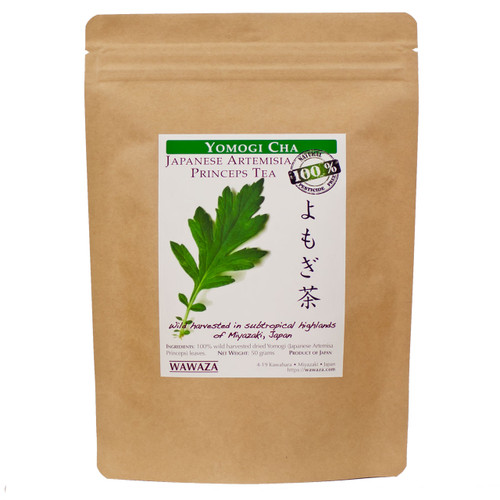All-natural tea for enhancing memory and improving circulatory disorders.
Ginkgo Biloba's antioxidants help protect the body from damaging effects of free radicals. They also contain a unique compound (called Ginkgolide) which improves blood flow to the brain.
❤ Autumnal, woodsy flavor and aroma
❤ Smooth, vegetal aftertaste
❤ Nearly colorless pale yellow/green infusion
Brew in 3 minutes (instructions below).
Wild-Harvested • All-Natural
Pesticide-free. Prepared from freshly-picked leaves and cut in strips in traditional tanzaku-giri (短冊きり) style for optimal brewing.
About Ginkgo Biloba
Ginkgo Biloba, also known as Maidenhair or just ginkgo, is one of the oldest trees in existence. It is the last surviving species of the ancient Ginkgo genus dating back 270 million years, before the Jurassic period.
Ginkgo is a large tree with a lifespan of centuries. It is highly resistant to insects, bacterial infections, fires, and air pollution. Today, wild ginkgo trees only exist in a few places, including Miyazaki prefecture in southern Japan.
Symbolism in Japan
Ginkgo trees are revered in Japan for their resilience, beauty, and long life. Old ones are venerated like a deity. You see them in temples, shrines, tea houses, parks, schoolyards, and public gathering places.
Ginkgo species has male and female plants. The magnificent "Grand Ginkgo" in Takaoka, 30-minute drive from where we are, is an 800-years-old female. This majestic lady is designated by the government of Japan as a Natural Monument. At her site, the townspeople host lively ginkgo festivals every November (see gallery for picture of 2017's festival poster.)
For the Japanese, the two-lobed leaves of ginkgo symbolize perseverance, longevity, and unification of yin and yang male-female duality. They extensively use the ginkgo leaf pattern in all sorts of designs including family crests, kimono patterns, and accessories.
See pictures in gallery for a few ginkgo-inspired Japanese motifs. The traditional hairstyle resembling ginkgo leaves (bottom left) is called Ichō-Gaeshi (Ginkgo chignon.)
Etymology
Ginkgo was introduced to the West by E. Kaempfer, a German naturalist who visited Japan in the 17th century. The word ginkgo originates from Kaempfer's misreading of its Japanese kanji characters 銀杏, meaning "silver apricot." Later on, scientists in Europe added the word Biloba (two-lobed) for the modern scientific classification name Ginkgo Biloba.
How to Infuse Ginkgo Leaves in 3 Minutes
The following instructions are for making 4 cups (800 ml total.)
- Add 5 grams (about 2 heaping tablespoons) of leaves to a pot.
- Add 4 cups (800 ml) of near-boiling water.
- Wait for about 3 minutes.
- Strain and Serve.
How to Infuse Ginkgo Leaves Japanese Style (Senjiru)
Senjiru is a time-tested technique for yielding maximum goodness locked deep in the leaves.
- Pour a little more than 4 cups of cold water into a pot. Add 5 grams of leaves (about 2 heaping tablespoons.)
- Heat to a full, rolling boil.
- Turn heat down and simmer for 10 minutes.
- Turn heat off and wait for about 10 minutes.
- Strain and serve.











